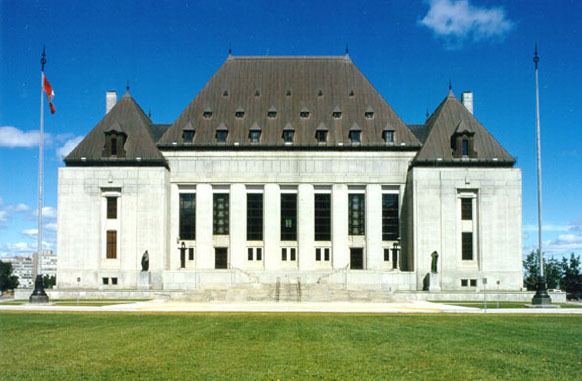Citations 2014 SCC 42 Ruling Appeal allowed Dates 14 May 2014 – 12 Jun 2014 Docket number 35,353 | Docket No. 35353 | |
 | ||
Full case name Canadian Artists’ Representation/Front des artistes canadiens and Regroupement des artistes en arts visuels du Québec v. National Gallery of Canada Prior history APPEAL from National Gallery of Canada v. Canadian Artists’ Representation 2013 FCA 64 (4 March 2013), setting aside a decision of the Canadian Artists and Producers Professional Relations Tribunal, 2012 CAPPRT 053 (16 February 2012). Leave to appeal granted, Canadian Artists' Representation/Front des artistes canadiens, et al. v. National Gallery of Canada 2013 CanLII 51823 (15 August 2013). | ||
Canadian Artists' Representation v National Gallery of Canada 2014 SCC 42 is a landmark case of the Supreme Court of Canada on the nature of bargaining in good faith. It also has an effect on the nature of negotiations for royalties that may be due to artists under Canada's Copyright Act.
Contents
Exhibition rights under Canadian copyright law
In 1988, the Copyright Act was amended to provide for an exhibition right "to present at a public exhibition, for a purpose other than sale or hire, an artistic work created after June 7, 1988, other than a map, chart or plan." Such fees were to be negotiated directly with individual copyright holders or their authorized agents.
Status of the Artist Act
In 1992, the Parliament of Canada passed the Status of the Artist Act ("SAA"), which provided for Canadian artists to be represented by recognized professional associations in negotiating terms of compensation on their behalf with federal "producers" who commission artists' services. Accordingly, Canadian Artists’ Representation ("CARFAC") and Regroupement des artistes en arts visuels du Québec ("RAAV") have been recognized with respect to rights relating to visual artists.
The case at hand
In 2003, CARFAC and RAAV commenced negotiations with the National Gallery of Canada ("NGC") in order to establish a scale agreement under the SAA. They sought to include minimum fees for the use of existing works of visual artists. The NGC expressed reservations and stated that they wished to receive legal advice on that issue, but over the next four years proceeded to draft an agreement that included such works. In 2007, the NGC, obtained a legal opinion upon which it relied to state that CARFAC/RAAV did not have the authority to negotiate for such fees, as it did not have written authorization from each artist covered by the agreement. On that basis, the NGC presented a revised draft scale agreement from which all references to existing works were removed. After trying to negotiate further, CARFAC and RAAV filed a complaint with the Canadian Artists and Producers Professional Relations Tribunal that the NGC had breached s. 32 of the SAA by failing to bargain in good faith.
Canadian Artists and Producers Professional Relations Tribunal
The Tribunal found in favour of CARFAC and RAAV, ruling that:
Federal Court of Appeal
In a 2-1 decision, the Tribunal's order was set aside. In the majority ruling Noël JA stated:
In dissent, Pelletier JA argued that granting a producer the right to use an existing work was similar to the service provided by hotels and car rental agencies by allowing others to use their property, and therefore the Tribunal’s interpretation of "provision of services" was reasonable. Because scale agreements do not apply to works for which the copyright has been assigned to a collective society, but rather only where the artist alone has the right to grant licences to use his or her work, there was no conflict between the two Acts. Applying Royal Oak Mines, he concluded that an objective assessment supported the Tribunal's finding that the NGC had negotiated in bad faith.
Immediate decision
In a rare move, judgment was given immediately after the hearing. McLachlin CJ declared:
Reasons given
In a unanimous decision, Rothstein J held that:
Impact
Following the initial decision, the National Gallery issued a press release, announcing:
Before the Supreme Court issued its ruling, concern was expressed as to whether the parties would have fared better if they had continued negotiations, as well as pointing out that a ruling in CARFAC/RAAV's favour would be expensive for the NGC and other galleries across the country. As well, it will also have serious implications for more obscure artists who may want to waive their minimum fee and negotiate freely with the gallery.
